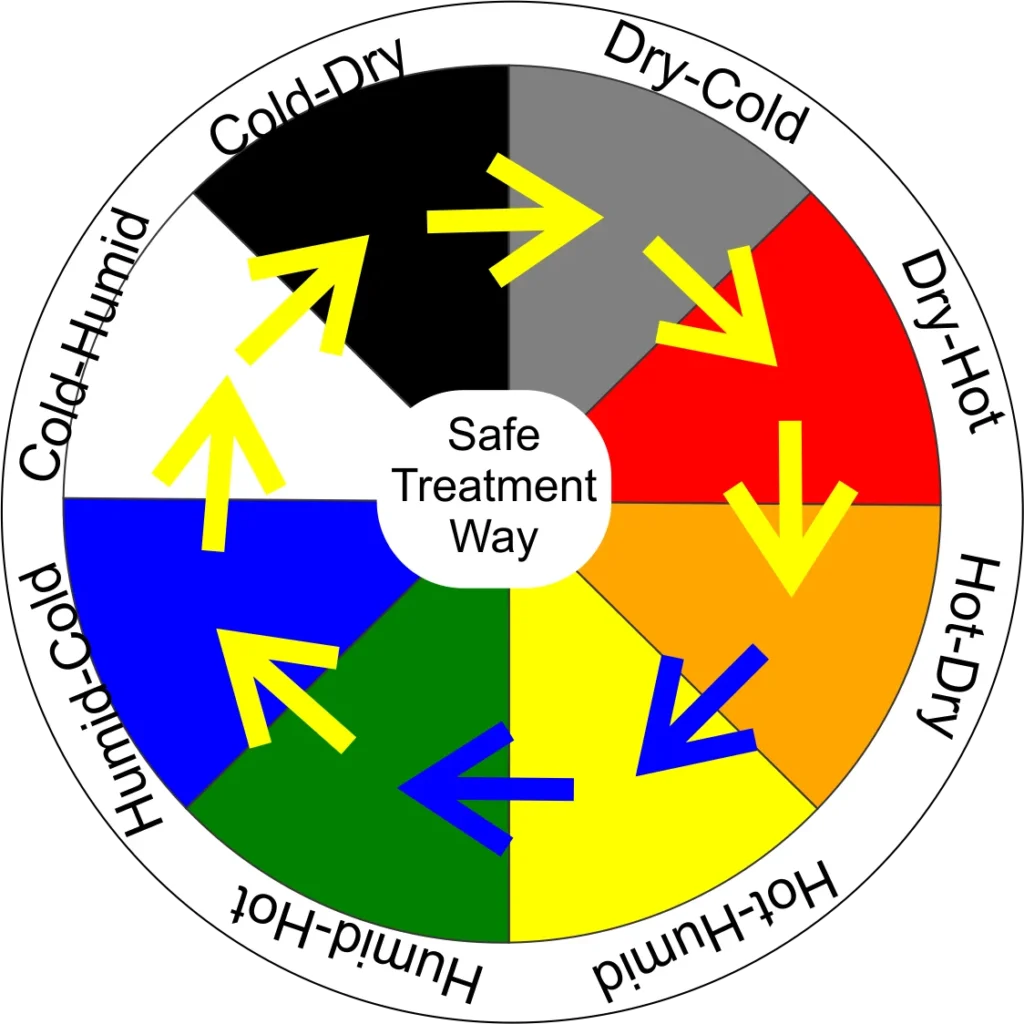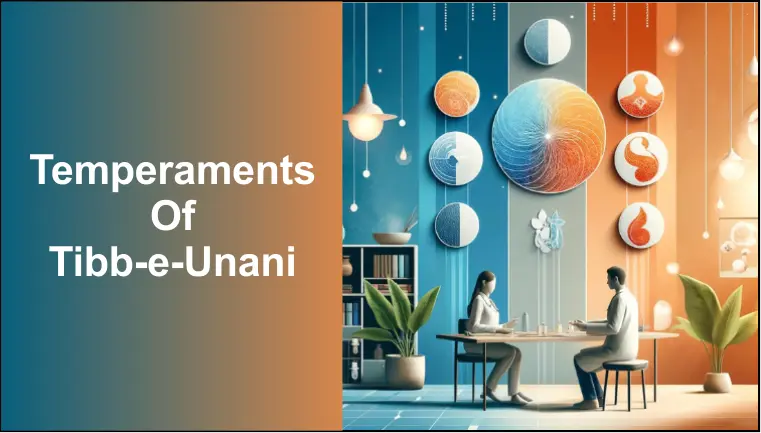How to affect, Temperaments of Tibb-e-Unani | SR
Understanding these temperaments
Tibb-e-Unani, also known as Unani Medicine (It is also known as western medicine.), is a traditional system of medicine rooted in ancient Greek medicine and developed and practiced extensively in the Middle East and South Asia. Central to this medical tradition are the four temperaments based on hot, cold, dry, and humid qualities. These temperaments and their combinations are crucial in diagnosing and treating illnesses. Understanding these temperaments of Tibb-e-Unani helps practitioners determine the nature of diseases and prescribe appropriate treatments.
The Four Basic Unani Medicine Temperaments
| 1. Hot | 2. Cold | 3. Dry | 4. Humid |
The Eight Combined Unani Medicine Temperaments
These essential qualities can be combined, with one quality being more dominant than the other, to form eight distinct temperaments:
| 1. Cold-Dry | 5. Hot-Humid |
| 2. Dry-Cold | 6. Humid-Hot |
| 3. Dry-Hot | 7. Humid-Cold |
| 4. Hot-Dry | 8. Cold-Humid |
Understanding the Tibb-e-Unani Temperaments
1. Cold Dry
This temperament characterizes a higher proportion of coldness with dryness. Individuals with this temperament may exhibit cool, dry skin and prefer warmth. They may also be prone to dry coughs, constipation, and dry skin.
2. Dry Cold
Here, dryness is more pronounced than coldness. Such individuals might experience symptoms like dry skin, brittle hair, and general dryness in their mucous membranes. They may be sensitive to cold environments, but not as much as those with a Cold-Dry temperament.
3. Dry Hot
In this combination, dryness is the dominant overheat. Symptoms may include dry, warm skin, a tendency towards dehydration, and dry, irritated eyes. These individuals might feel uncomfortable in hot, dry climates.
4. Hot Dry
This temperament features a higher degree of heat with dryness. Individuals may have warm, dry skin, experience frequent thirst, and be prone to inflammatory conditions. They generally prefer more relaxed environments to balance their internal heat.
5. Hot-Humid
This temperament is characterized by a predominance of heat with humidity. Such individuals might have warm, moist skin, a tendency to sweat easily, and be susceptible to conditions like acne and excessive perspiration.
6. Humid-Hot
In this combination, humidity is more pronounced than heat. Symptoms may include moist, warm skin and a tendency to feel sticky or sweaty. These individuals may be prone to fungal infections and feel discomfort in hot, humid weather.
7. Humid-Cold
Here, humidity is dominant over coldness. Individuals might have cool, moist skin and experience respiratory issues, frequent colds, and damp environments that exacerbate their symptoms.
8. Cold Humid
This temperament features a higher degree of coldness with humidity. Symptoms may include cold, clammy skin, a tendency to feel chilled, and susceptibility to conditions like rheumatism and congestion.
1. Cold Dry
This temperament characterizes a higher proportion of coldness with dryness. Individuals with this temperament may exhibit cool, dry skin and prefer warmth. They may also be prone to dry coughs, constipation, and dry skin.
2. Dry Cold
Here, dryness is more pronounced than coldness. Such individuals might experience symptoms like dry skin, brittle hair, and general dryness in their mucous membranes. They may be sensitive to cold environments, but not as much as those with a Cold-Dry temperament.
3. Dry Hot
In this combination, dryness is the dominant overheat. Symptoms may include dry, warm skin, a tendency towards dehydration, and dry, irritated eyes. These individuals might feel uncomfortable in hot, dry climates.
4. Hot Dry
This temperament features a higher degree of heat with dryness. Individuals may have warm, dry skin, experience frequent thirst, and be prone to inflammatory conditions. They generally prefer more relaxed environments to balance their internal heat.
5. Hot-Humid
This temperament is characterized by a predominance of heat with humidity. Such individuals might have warm, moist skin, a tendency to sweat easily, and be susceptible to conditions like acne and excessive perspiration.
6. Humid-Hot
In this combination, humidity is more pronounced than heat. Symptoms may include moist, warm skin and a tendency to feel sticky or sweaty. These individuals may be prone to fungal infections and feel discomfort in hot, humid weather.
7. Humid-Cold
Here, humidity is dominant over coldness. Individuals might have cool, moist skin and experience respiratory issues, frequent colds, and damp environments that exacerbate their symptoms.
8. Cold Humid
This temperament features a higher degree of coldness with humidity. Symptoms may include cold, clammy skin, a tendency to feel chilled, and susceptibility to conditions like rheumatism and congestion.
Diagnosing and Treating With Temperaments of Tibb-e-Unani
After Understanding these temperaments, In Tibb-e-Unani medicine, diagnosing a patient’s temperament is essential for determining the appropriate treatment. A detailed examination of the patient’s physical and emotional characteristics, lifestyle, and environmental factors helps identify the dominant temperament.
Once the temperament is identified, treatment typically involves balancing the dominant qualities. For example, a person with a Cold, Dry temperament might be treated with warm, moist foods and herbs to balance the coldness and dryness. Similarly, someone with a Hot, Humid temperament might be prescribed excellent, dry substances to counteract the heat and humidity. So, Understanding these temperaments is very important.
Correcting Temperament Disorders
The temperament issue should be treated with foods and medicines for the next temperament to correct a temperament disorder. The sequence typically follows:
| – Cold Dry → Dry Cold | – Hot Humid → Humid Hot |
| – Dry Cold → Dry Hot | – Humid Hot → Humid Cold |
| – Dry Hot → Hot Dry | – Humid Cold → Cold Humid |
| – Hot Dry → Hot Humid | – Cold Humid → Cold Dry |

This gradual transition helps gently restore balance. However, in cases of emergency, temperament can also be treated by using the anti-temperament (the opposite quality). For instance, hot and humid remedies could immediately address cold and dry conditions. It is crucial to undertake such treatments under the guidance of a qualified physician to avoid any adverse effects.

8 Temperaments, This Way Of Changing Is Safe & Easy
8 Temperaments, Opposite Way Of Changing
Application in Health and Fitness
The principles of the eight temperaments are repeatedly referenced in health and fitness posts within the Tibb-e-Unani system. By understanding these temperaments, individuals can better manage their health by choosing foods, activities, and lifestyles that balance their natural dispositions. This holistic approach addresses the symptoms and aims to restore the body’s natural balance, promoting overall well-being.
Conclusion,
The concept of the four temperaments and their combinations into eight distinct categories forms the cornerstone of Tibb-e-Unani medicine. This ancient wisdom continues to provide valuable insights into diagnosing and treating various health conditions by understanding and balancing the human body’s intrinsic qualities of hot, cold, dry, and humid.




